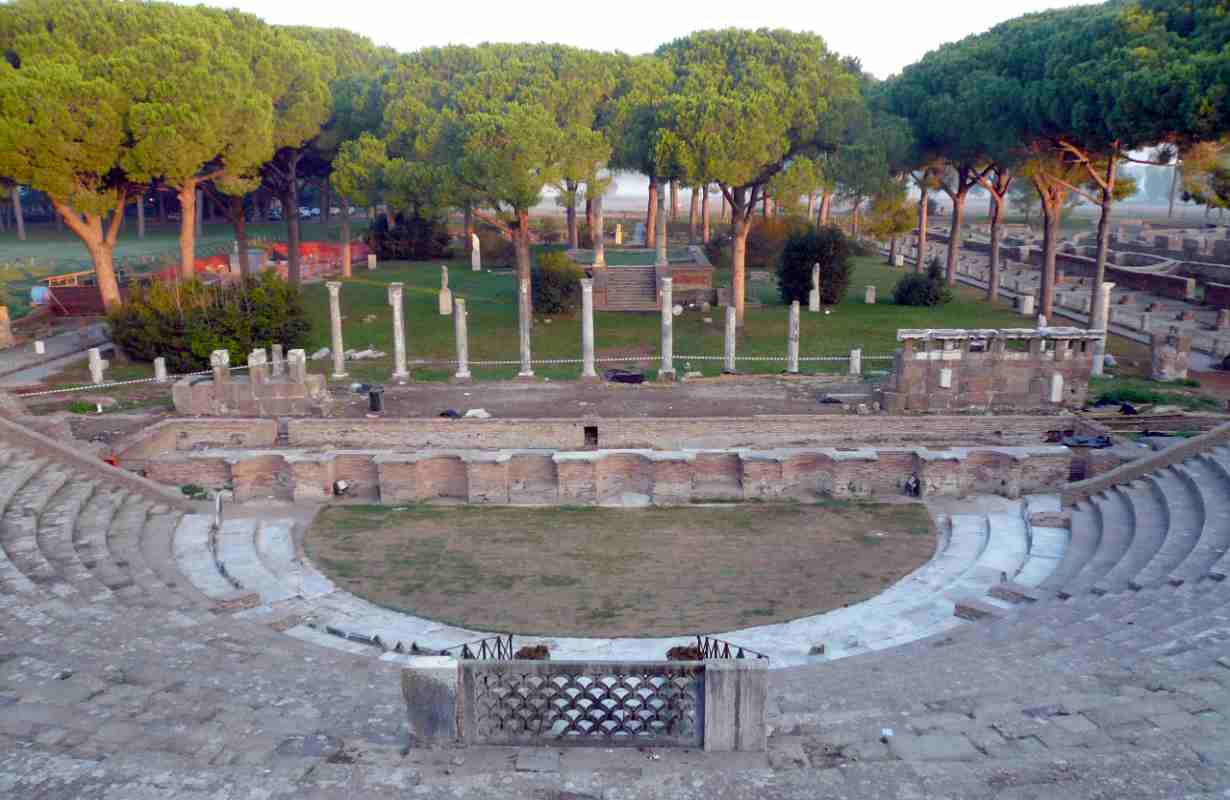The Roman Theater
The Roman Theater is located within the archaeological area of the excavations of Ostia Antica and was built under Augustus at the end of the 1st century AD. It was a majestic and imposing structure for the time, originally it could hold up to 3000 spectators and towards the end of the second century it was enlarged to accommodate 4000 people. In the fourth century, the central entrance corridor of the theater was modified by Ragonio Vincenzio Celso who had a statue of Rome erected behind the east Nymphaeum, still visible today. In the Severian era the theater was enlarged and almost completely rebuilt, another order of steps was added to the top of the auditorium and the axial entrance was created.
The Ostia Antica theater together with the nearby piazzale delle Corporazioni made up a grandiose complex that included the offices of the most important merchants and traders in the city. Over the centuries the theater has been restored many times, however today it fully retains the original charm of bygone times. Built entirely in masonry, the remains of both the scenic building and the steps are still well preserved.
In the modern era, the theater of Ostia Antica hosts, especially in the summer, numerous cultural events, concerts, theatrical performances, dance and cabaret.
